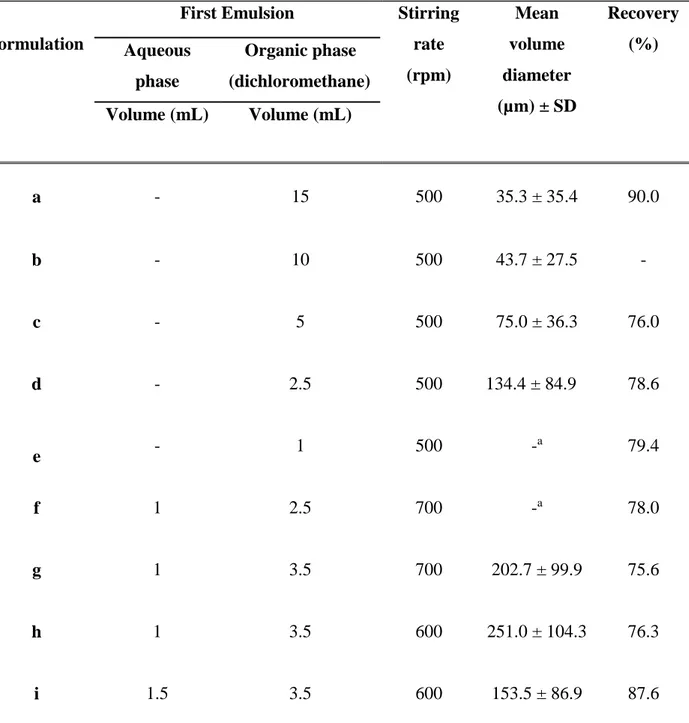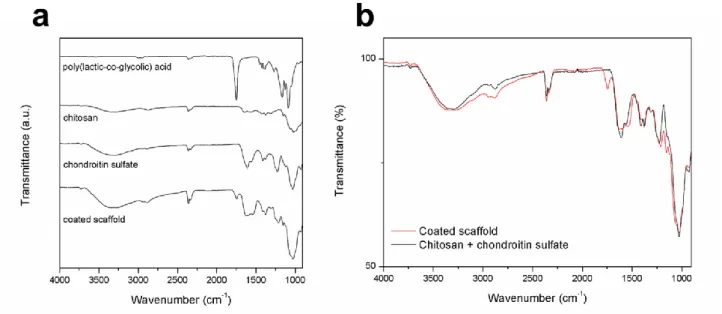Supplemental material
Table S1. Parameters employed to prepare PLGA microparticles.
Formulation
First Emulsion Stirring rate (rpm) Mean volume diameter (µm) ± SD Recovery (%) Aqueous phase Organic phase (dichloromethane) Volume (mL) Volume (mL) a - 15 500 35.3 ± 35.4 90.0 b - 10 500 43.7 ± 27.5 - c - 5 500 75.0 ± 36.3 76.0 d - 2.5 500 134.4 ± 84.9 78.6 e - 1 500 -a 79.4 f 1 2.5 700 -a 78.0 g 1 3.5 700 202.7 ± 99.9 75.6 h 1 3.5 600 251.0 ± 104.3 76.3 i 1.5 3.5 600 153.5 ± 86.9 87.6
For all the formulations, 500 mg of PLGA were added to the organic phase.
The external phase is constituted by 500 mL of PVA 0.1% (w/v) for all the formulations.
In case of the double emulsion (from formulation f to i), 0.1 % of Span® 60 was used to stabilize the
first emulsion.
Figure S1. Attenuated total reflectance-Fourier transform infrared (ATR-FTIR) spectra of (a) the
raw polymers (i.e., PLGA, chitosan, and chondroitin-4-sulphate) and the scaffold coated with chitosan and chondroitin-4-sulphate; (b) comparison between the spectra of the coated scaffold and the sum of the chitosan and chondroitin-4-sulphate spectra.
Figure S2. Residual mass profiles of uncoated and coated scaffolds. Equations and correlation


